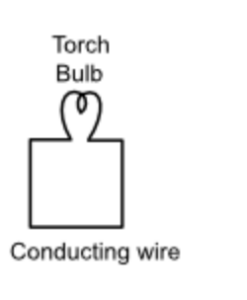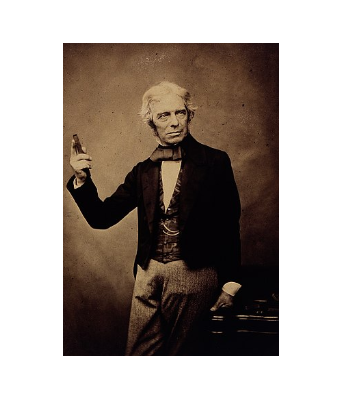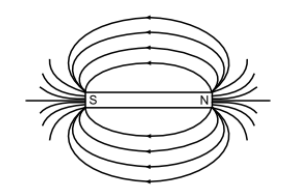Table of Contents
For long time in history, phenomena of electricity and magnetism were considered separate and unrelated. But in last 200 years, things have changed tremendously, and now we duly regard electricity and magnetism having a common source. Several experiments demonstrate that electricity and magnetism are interrelated.
Currents produce magnetism
Oersted discovered that when a current was passed through a wire, a magnetic needle placed in its vicinity deflected. He knew magnets could deflect magnetic needles. But his observation proved yet another thing: that currents (charges in motion) also produce magnetic fields that deflect magnetic needles. It means a current-carrying wire is a virtual magnet.
Nature is more mysterious and fascinating than we think, right from common man to scientists!… Even the converse effect to the one described above is available in nature! And what is that??!!
- Moving magnets produce currents, or
- Moving conducting loops in magnetic regions develop currents
So, if we see,
- Moving charges produce magnetism
- Moving magnets produce electricity.
So, electricity and magnetism are deeply interrelated!!
The phenomenon of producing electricity using moving magnets or by moving conducting loops in magnetic regions is called electromagnetic Induction.
Do you know, it is using electromagnetic induction, electricity that enters our homes is produced hundreds and thousands of kilometres away from our homes, before it is directed to move towards our cities, homes and industries.
You can do the following experiment at home to get convinced about the phenomenon of electromagnetic induction.
We know normally to light a torch bulb you need a battery.

Now make the following simple circuit.

Take a moderately powerful magnet and bring it fast to the closed loop of torch bulb and conducting wires. You will find that:
- As you bring the magnet closer, the bulb lights up.
- But you will also find that when you stop the magnet, the bulb doesn’t glow.
- Also, if you take the magnet away from the loop, the magnet lights up again and when you stop the magnet, the bulb stops glowing.
- Further, the faster you move the magnet (away from or towards the coil), the brighter it glows.
This goes on to prove that moving magnets do produce currents.

Faraday’s laws of electromagnetic Induction
Through his investigations on the experiments of electromagnetic induction, Faraday came up with two laws.
Before we dwell deep and try to understand these laws, we must become familiar with physical quantities referred in these laws.
-
Magnetic Field lines
Consider a region where magnetic field is present. For this, you can imagine region surrounding a magnet. We know magnets have influence in the region around them. At every point in this region, there is a definite value of magnetic force on the magnetic needle in a definite direction. If we plot these forces as small lines, with arrows on them indicating directions of forces (essentially vectors) then we get continuous curves. By this method, we basically try to visualize the magnetic influence of a magnet. The credit for this powerful picturization of magnetic field using these lines, which are actually imaginary, goes to Michael Faraday. Two important properties of these lines are:
- The direction of magnetic field line at a particular point gives the direction magnetic force on the north pole of the magnetic needle kept at that point.

- The density of magnetic field lines (number of magnetic field lines per unit area) is a measure of the strength of magnetic effect at that point.
In the adjacent figure, as depicted by density of magnetic field lines, the magnetic field is far more stronger near the poles of the magnet than around the central regions of the magnet.
-
Magnetic Flux:
Within the region of magnetic field, consider a small imaginary area of any arbitrary shape. Clearly magnetic field lines pass through it. For simplicity, let these lines be perpendicular to the surface. Magnetic flux is said to be linked with this surface. It is defined as Ø = (Magnetic field) x (area) Its SI unit is weber.
-
Electromotive force:
The electrical potential difference across two points of a circuit that drives current through the circuit.
Now we come to defining Faraday’s laws of electromagnetic Induction
As was said earlier, there are two laws, given by Faraday, for describing the phenomenon of electromagnetic induction.
Faraday’s first law of electromagnetic Induction: According to this law, whenever there is a change in magnetic flux linked with a coil kept in a magnetic field, an emf is induced in the coil.

In the first diagram, the magnet and coil are both fixed. With each turn of the coil, there is a certain value of magnetic field due to the magnet. The farther a particular turn is from the magnet, the smaller is the strength of magnetic field at the location of the turn.
Hence, the strength of magnetic field is different for different turns of the coil. The product
Magnetic flux = (Magnetic field)(area) is different for different turns of the coil.
If we sum up magnetic flux lined with all the turns, we get total magnetic flux linked with all the turns of the coil.
In the second figure, we move the magnet towards the coil. Doing this clearly increases the total magnetic flux linked with the coil.
Ø = (Magnetic field) x (area of coil)
Faraday’s first law says that by moving the magnet, since you have changed the magnetic flux linked with the coil, an emf will be induced in the coil. This emf drives current through the coil.
Consider a case if we moved both the coil and the magnet towards, say right, with the same speed. In that case magnetic flux lined with the coil will remain same. Hence no emf will be induced in the coil.
Faraday’s second law of electromagnetic Induction
Second law quantifies the induced emf.
It states that induced emf in the coil is equal to the rate of change of magnetic flux linked with the circuit.
If there are N turns of a coil, each linked with magnetic flux Ø, then total magnetic flux lined with the coil is NØ.
Induced emf, e = – d/dt(NØ) = – N x dØ/dt
dØ is the change in magnetic flux linked with a single turn of the coil in time dt.
Clearly, e ∝ dØ/dt . It means by moving the magnet faster, dØ/dt will be greater, hence induced emf will also be larger.
Significance of negative sign in the equation and Lenz’s law: Negative sign indicates that direction of induced emf is such that it opposes the very cause responsible for the generation of induced emf. This implies that the magnetic field generated by the induced current will repel the incoming magnet.
On the other hand, if the magnet were to be moved away from the coil, the magnetic field of induced current would try to attract the magnet.
So, the direction of induced emf is such that it opposes the very cause that is responsible for the generation of induced emf. This is the statement of Lenz’s law.
Applications of electromagnetic Induction
Transformers, induction cookers, electric generators, Brakes (electromagnetic damping), induction motors..
Frequently Asked Questions on Faraday’s law
State Faraday’s first law of electromagnetic Induction?
Whenever there is a change in magnetic flux linked with a coil, an emf is induced in the coil.
State Faraday’s second law of electromagnetic Induction?
The amount of induced emf in a coil is equal to the rate of change of magnetic flux linked with the coil.
Which law gives the direction of induced emf in a coil?
Lenz’s law gives the direction of induced emf in a coil. As per Lenz’s law, the direction of induced emf is such that it opposes the very cause that is responsible for its generation.
When a magnet is pushed towards a coil, on what factors does the magnitude of induced emf in the coil depend on?
The magnitude of induced emf depends on the number of turns of the coil, area of the coil, strength of the magnet and also how fast was the magnet pushed towards the coil.









